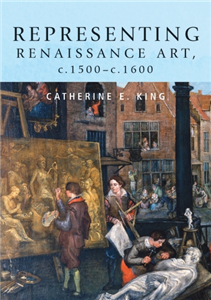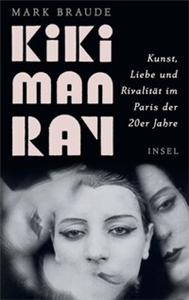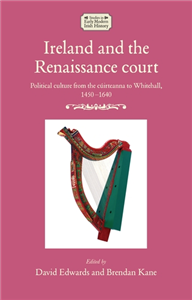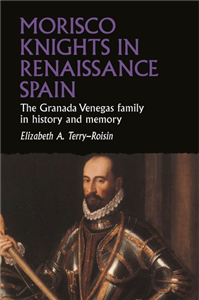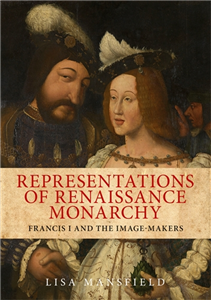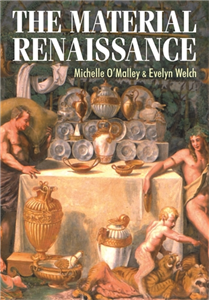Your Search Results
-
Manilla Press
Manilla Press is a home for novelists, journalists, memoirists, thinkers, dreamers, influencers. Our reach is international, our range broad, we publish with focus, passion and conviction, and we seek to find and publish underrepresented voices.
View Rights Portal
-
Promoted ContentThe ArtsJanuary 2019
Derek Jarman
by Rowland Wymer
This book gives detailed and original critical readings of all eleven of Derek Jarman's feature-length films, arguing that he occupies a major and influential place in European and world cinema rather than merely being a cult figure. It places particular emphasis on the importance of Renaissance art and literature for Jarman, and emphasises his interest in Jungian psychology. Wymer shows how Jarman used his films to take his audience with him on an inner journey in search of the self, whilst remaining fully aware of the dangers of such a journey. Making substantial use of Jarman's unpublished papers as well as all his published works, Wymer argues that the films are orientated towards a much wider audience than is often supposed. They are addressed to anyone, of whatever gender or sexuality, who is prepared to go on a journey in search of him or her self and to become Jarman's accomplice in 'the dream world of the soul'.
-
Promoted ContentHumanities & Social SciencesNovember 2013
Renaissance humanism and ethnicity before race
The Irish and the English in the seventeenth century
by Ian Campbell
The modern ideology of race, so important in twentieth-century Europe, incorporates both a theory of human societies and a theory of human bodies. Ian Campbell's new study examines how the elite in early modern Ireland spoke about human societies and human bodies, and demonstrates that this elite discourse was grounded in a commitment to the languages and sciences of Renaissance Humanism. Emphasising the education of all of early modern Ireland's antagonistic ethnic groups in common European university and grammar school traditions, Campbell explains both the workings of the learned English critique of Irish society, and the no less learned Irish response. Then he turns to Irish debates on nobility, medicine and theology in order to illuminate the problem of human heredity. He concludes by demonstrating how the Enlightenment swept away these humanist theories of body and society, prior to the development of modern racial ideology in the late eighteenth century. ;
-
 Trusted Partner
June 1993
Trusted Partner
June 1993Die Ideologie des Ästhetischen
by Paul Man, Karl Heinz Bohrer, Christoph Menke, Jürgen Blasius, Christoph Menke
Als Paul de Man 1983 starb, war er der wohl bekannteste und einflußreichste Vertreter einer Richtung der Literaturkritik und ihrer Theore, die allgemein als »dekonstruktiv« bezeichnet wird. Kennzeichnend für diese Richtung ist eine erneute Konzentration auf die innere Verfaßtheit der literarischen Texte. Eine erste Auswahl dieser methodisch vorbildlich wie brillant geschriebenen Texte ist 1988 unter dem Titel »Allegorien des Lesens« in der edition suhrkamp erschienen. Die vorliegende Auswahl konzentriert sich auf die methodologischen und theoretischen Prämissen dieses Vorhabens, wie sie die Abhandlungen über die Zeitlichkeit der Literatur, über Shelley und über die Autobiographie deutlich machen. Sich auf die immanente Verfaßtheit und Bewegung von Texten einzulassen ist nach de Man kein selbstzweckhaftes, folgenloses Unternehmen. De Man beansprucht vielmehr für seine »Rückkehr zur Philologie« eine allgemeine Bedeutung; die Literaturkritik ist zugleich philosophische und politische Kritik. Damit ist der zweite Schwerpunkt dieser Auswahl bezeichnet. De Man erläutert diese These zum einen in kritischer Auseinandersetzung mit der Philosophie Jacques Derridas. Zum anderen zeigt er an zentralen Texten der ästhetischen Tradition, an Kant und Hegel, daß ihr falsches – »ideologisches« – Verständnis literarischer Texte unter der Kategorie des »Ästhetischen« ebenso weitreichende philosophische wie politische Konsequenzen hat.
-
 Trusted Partner
Gender studies: menNovember 2007
Trusted Partner
Gender studies: menNovember 2007Representing Renaissance art, c.1500–c.1600
by Catherine E. King
Representing Renaissance art, c.1500-c.1600 is a study of change and continuity in the iconographies of art and the visual representation of artists during the sixteenth century, especially in Italy and the Netherlands. The issue of how, and how far, artists obtained higher status for their profession during the Renaissance is a key question for the study of the early modern period. This book considers the maintenance of well-established traditions for the visual representation of artists, and also examines the new iconographies that emerged in the sixteenth century. By highlighting art and architecture that artists designed for their personal use, including the decoration of their houses, this study provides insight into the tastes and 'ways of looking' specific to artists. By examining the visual evidence we see the opinions both of artists who expressed their views in literary texts, and additionally those of artists who did not publish their ideas in written form.
-
 Trusted Partner
April 2023
Trusted Partner
April 2023Kiki Man Ray
Kunst, Liebe und Rivalität im Paris der 20er Jahre
by Mark Braude
Man nannte ihn »Man Ray« und sie die »Königin von Montparnasse«: Emmanuel Radnitzky und Alice Ernestine Prin.Kiki de Montparnasse begeisterte als Sängerin in Nachtclubs, plauderte mit Jean Cocteau und Marcel Duchamp in den angesagten Cafés von Paris und saß Malern wie Modigliani, Calder und Soutine Modell. Ihre Autobiografie – mit einem Vorwort von Ernest Hemingway – kam in Frankreich ganz groß raus und in Amerika auf den Index. Und das alles noch vor ihrem dreißigsten Lebensjahr.Als Kiki und Man Ray sich kennenlernen, ist sie 20 und eine feste Größe in der Montparnasse-Bohème, er 31, ein namenloser Fotograf aus Amerika, gerade erst in Paris angekommen. Er fotografiert sie, sie werden ein Paar, es folgt eine acht Jahre währende stürmische Liebesbeziehung. Mit ikonischen Aufnahmen wie »Violon d’Ingres« und »African mask« – ihr Rücken, ihr makelloses Gesicht – begründet Man Ray seine Karriere, sie öffnet ihm die Türen zu Galeristen und Künstlern. Er ermuntert sie, selbst zu malen: Alltagsszenen, Erinnerungen an ihre Kindheit im Burgund. Aber als sie auch damit Erfolg hat, ist er eifersüchtig und macht sie klein. Wa war es, das diese junge Frau wie keine andere zur Verkörperung einer ganzen Ära machte? In seinem akribisch recherchierten, glänzend geschriebenen Buch versucht Mark Braude, dem Mythos Kiki auf die Spur zu kommen, das Rätsel ihrer Anziehungskraft zu entschlüsseln. Erstmals wird Kikis prägender Einfluss nicht nur auf Man Ray, sondern auf die gesamte Künstlerszene vom Montparnasse deutlich.
-
 Trusted Partner
April 2023
Trusted Partner
April 2023Kiki Man Ray
Kunst, Liebe und Rivalität im Paris der 20er Jahre
by Mark Braude, Barbara Steckhan, Thomas Wollermann
Man nannte ihn »Man Ray« und sie die »Königin von Montparnasse«: Emmanuel Radnitzky und Alice Ernestine Prin.Kiki de Montparnasse begeisterte als Sängerin in Nachtclubs, plauderte mit Jean Cocteau und Marcel Duchamp in den angesagten Cafés von Paris und saß Malern wie Modigliani, Calder und Soutine Modell. Ihre Autobiografie – mit einem Vorwort von Ernest Hemingway – kam in Frankreich ganz groß raus und in Amerika auf den Index. Und das alles noch vor ihrem dreißigsten Lebensjahr.Als Kiki und Man Ray sich kennenlernen, ist sie 20 und eine feste Größe in der Montparnasse-Bohème, er 31, ein namenloser Fotograf aus Amerika, gerade erst in Paris angekommen. Er fotografiert sie, sie werden ein Paar, es folgt eine acht Jahre währende stürmische Liebesbeziehung. Mit ikonischen Aufnahmen wie »Violon d’Ingres« und »African mask« – ihr Rücken, ihr makelloses Gesicht – begründet Man Ray seine Karriere, sie öffnet ihm die Türen zu Galeristen und Künstlern. Er ermuntert sie, selbst zu malen: Alltagsszenen, Erinnerungen an ihre Kindheit im Burgund. Aber als sie auch damit Erfolg hat, ist er eifersüchtig und macht sie klein. Wa war es, das diese junge Frau wie keine andere zur Verkörperung einer ganzen Ära machte? In seinem akribisch recherchierten, glänzend geschriebenen Buch versucht Mark Braude, dem Mythos Kiki auf die Spur zu kommen, das Rätsel ihrer Anziehungskraft zu entschlüsseln. Erstmals wird Kikis prägender Einfluss nicht nur auf Man Ray, sondern auf die gesamte Künstlerszene vom Montparnasse deutlich.
-
 Trusted Partner
Humanities & Social SciencesAugust 2024
Trusted Partner
Humanities & Social SciencesAugust 2024Ireland and the Renaissance court
by David Edwards, Brendan Kane
Ireland and the Renaissance court is an interdisciplinary collection of essays exploring Irish and English courts, courtiers and politics in the early modern period, c. 1450-1650. Chapters are contributed by both established and emergent scholars working in the fields of history, literary studies, and philology. They focus on Gaelic cúirteanna, the indigenous centres of aristocratic life throughout the medieval period; on the regnal court of the emergent British empire based in London at Whitehall; and on Irish participation in the wider world of European elite life and letters. Collectively, they expand the chronological limits of 'early modern' Ireland to include the fifteenth century and recreate its multi-lingual character through exploration of its English, Irish and Latin archives. This volume is an innovative effort at moving beyond binary approaches to English-Irish history by demonstrating points of contact as well as contention.
-
 Trusted Partner
Humanities & Social SciencesAugust 2026
Trusted Partner
Humanities & Social SciencesAugust 2026Morisco knights in Renaissance Spain
The Granada Venegas family in history and memory
by Elizabeth Terry-Roisin
How does a Morisco enter the Spanish nobility? This book reveals the cultural strategies through which a family of converts from Islam to Christianity overcame limpieza de sangre laws, rose in social status, avoided King Philip III's Morisco expulsions of 1609-14, and achieved a noble title. Drawing on archival sources from both Spain and Italy to re-create the original family archive, this book follows the Granada Venegas family from Granada, to Madrid, to the dusty Andalucían town of Campotéjar, of which they became Marquises, and finally to Italy. Their descendants would serve as Doges of Genoa in the eighteenth century.
-
 Trusted Partner
Humanities & Social SciencesNovember 2023
Trusted Partner
Humanities & Social SciencesNovember 2023Critical theory and human rights
From compassion to coercion
by David McGrogan
This book describes how human rights have given rise to a vision of benevolent governance that, if fully realised, would be antithetical to individual freedom. It describes human rights' evolution into a grand but nebulous project, rooted in compassion, with the overarching aim of improving universal welfare by defining the conditions of human well-being and imposing obligations on the state and other actors to realise them. This gives rise to a form of managerialism, preoccupied with measuring and improving the 'human rights performance' of the state, businesses and so on. The ultimate result is the 'governmentalisation' of a pastoral form of global human rights governance, in which power is exercised for the general good, moulded by a complex regulatory sphere which shapes the field of action for the individual at every turn. This, unsurprisingly, does not appeal to rights-holders themselves.
-
 Trusted Partner
Humanities & Social SciencesJanuary 2017
Trusted Partner
Humanities & Social SciencesJanuary 2017The divorce of King Lothar and Queen Theutberga
Hincmar of Rheims's De divortio
by Rachel Stone, Charles West
In the mid-ninth century, Francia was rocked by the first royal divorce scandal of the Middle Ages: the attempt by King Lothar II of Lotharingia to rid himself of his queen, Theutberga and remarry. Even 'women in their weaving sheds' were allegedly gossiping about the lurid accusations made. Kings and bishops from neighbouring kingdoms, and several popes, were gradually drawn into a crisis affecting the fate of an entire kingdom. This is the first professionally published translation of a key source for this extraordinary episode: Archbishop Hincmar of Rheims's De divortio Lotharii regis et Theutbergae reginae. This text offers eye-opening insight both on the political wrangling of the time and on early medieval attitudes towards magic, penance, gender, the ordeal, marriage, sodomy, the role of bishops, and kingship.The translation includes a substantial introduction and annotations, putting the case into its early medieval context and explaining Hincmar's sometimes-dubious methods of argument.
-
 Trusted Partner
Literature & Literary StudiesSeptember 2008
Trusted Partner
Literature & Literary StudiesSeptember 2008Every Man Out of His Humour
Ben Jonson
by David Bevington, Helen Ostovich, Richard Dutton, Alison Findlay, Helen Ostovich
Despite its popularity when it first appeared in print in 1600, Every Man out of His Humour has never appeared as a single modern critical edition until now. The volume's introduction and annotations convey early modern obsessions with wealth and self-display by providing historical contexts and pointing out the continuity of those obsessions into modern life. The play is of interest because of its influence on the course of city comedy and its wealth of information about social relationships and colloquial language at the end of Elizabeth's reign. Jonson's experiments in generating theatrical meaning continued throughout his career, but Every Man out of His Humour - with its youthful vigour and extraordinary visualizations of the urban capacity for self-deceit - is a text that enriches the understanding of all the plays that come after it. ;
-
 Trusted Partner
December 1987
Trusted Partner
December 1987Allegorien des Lesens
by Paul Man, Werner Hamacher, Peter Krumme, Werner Hamacher
Im Falle Paul de Mans ist die begriffliche Charakterisierung seines Vorgehens zusätzlich erschwert dadurch, daß die Theorie nie losgelöst von den Texten, an denen sie gewonnen wird, betrachtet werden kann.
-
 Trusted Partner
The ArtsMay 2016
Trusted Partner
The ArtsMay 2016Representations of Renaissance monarchy
Francis I and the image-makers
by Lisa Mansfield
Representations of Renaissance monarchy analyses the portraits and personal imagery of Francis I, one of the most frequently portrayed rulers of sixteenth-century Europe. The distinctive likeness of the Valois king was widely disseminated and perceived by his French subjects, and Tudor and Habsburg rivals abroad. Complementing studies on the representation of Henry VIII, this book makes a dynamic contribution to scholarship on the enterprise of royal image-making in early-modern Europe. The discussion not only highlights the inventiveness of the visual arts in Renaissance France but also alludes to the enduring politics of physical appearance and seductive power of the face and body in modern visual culture. Coinciding with the five hundredth anniversary of Francis I's accession, this book will appeal to scholars and students of medieval and Renaissance art, the history of portraiture or anyone interested in images of monarchy and the history of France. ;
-
 Trusted Partner
Literature & Literary StudiesJanuary 2019
Trusted Partner
Literature & Literary StudiesJanuary 2019Pastoral poetry of the English Renaissance
An anthology
by J. B. Lethbridge, Sukanta Chaudhuri
Renaissance pastoral poetry is gaining new interest for its distinctive imaginative vein, its varied allusive content, and the theoretical implications of the genre. This is by far the biggest ever anthology of English Renaissance pastoral poetry, with 277 pieces spanning two centuries. Spenser, Sidney, Jonson and Drayton are amply represented alongside their many contemporaries. There is a wide range of pastoral lyrics, weightier allusive pieces, and translations from classical and vernacular pastoral poetry; also, more unusually, pastoral ballads and poems set in all kinds of prose works. Each piece has been freshly edited from the original sources, with full apparatus and commentary. This book will be complemented by a second volume, to be published in 2017, which includes a book-length introduction, textual notes and analytic indices.
-
 Trusted Partner
Literature & Literary StudiesMarch 2013
Trusted Partner
Literature & Literary StudiesMarch 2013The Renaissance text
Theory, editing, textuality
by Andrew Murphy
This collection of essays focuses attention on the broad issue of Renaissance textuality. It explores such topics as the position of the reader relative to the text; the impact of editorial strategies and modes of presentation on our understanding of the text; the complexities of extended textual histories; and the relevance of gender to the process of textual retrieval and preservation. The essays, whilst informed by contemporary theory, are not dominated by a single programmatic viewpoint. Reflecting the multiplicitous nature of Renaissance textuality, the collection provides space for a variety of different positions and lines of analysis and enquiry. The Renaissance text will be of interest to those with specialist concerns in editing, textuality and bibliography, and will also be of interest to those more generally concerned with Renaissance literature or with textual or literary history. ;
-
 Trusted Partner
The ArtsJanuary 2019
Trusted Partner
The ArtsJanuary 2019Carol Reed
by Peter William Evans
Carol Reed is one of the truly outstanding directors of British cinema, and one whose work is long overdue for reconsideration. This major study ranges over Reed's entire career, combining observation of general trends and patterns with detailed analysis of twenty films, both acknowledged masterpieces and lesser-known works. Evans avoids a simplistic auteurist approach, placing the films in their autobiographical, socio-political and cultural contexts and relating these to the analysis of Reed's art. The critical approach combines psychoanalysis, gender theory, and the analysis of form. Archival research is also relied on to clarify Reed's relations with his creative team, financial backers and others. Films examined include Bank Holiday, A Girl Must Live, Odd Man Out, The Fallen Idol, The Third Man, Night Train to Munich, The Way Ahead, Outcast of the Islands, Trapeze and Oliver!.
-
 Trusted Partner
Humanities & Social SciencesJune 2010
Trusted Partner
Humanities & Social SciencesJune 2010The Material Renaissance
None
by Michelle O'Malley, Christopher Breward, Evelyn Welch, Bill Sherman
Despite the recent interests of economic and art historians in the workings of the market, we still know remarkably little about the everyday context for the exchange of objects and the meaning of demand in the lives of individuals in the Renaissance. Nor do we have much sense of the relationship between the creation and purchase of works of art and the production, buying and selling of other types of objects in Italy in the period. The material Renaissance addresses these issues of economic and social life. It develops the analysis of demand, supply and exchange first proposed by Richard Goldthwaite in his ground-breaking Wealth and the demand for art in Renaissance Italy, and expands our understanding of the particularities of exchange in this consumer-led period. Considering food, clothing and every-day furnishings, as well as books, goldsmiths' work, altarpieces and other luxury goods, the book draws on contemporary archival material to explore pricing, to investigate production from the point of view of demand, and to look at networks of exchange that relied not only on money but also on credit, payment in kind and gift giving. The material Renaissance establishes the dynamic social character of exchange. It demonstrates that the cost of goods, including the price of the most basic items, was largely contingent upon on the relationship between buyer and seller, shows that communities actively sought new goods and novel means of production long before Colbert encouraged such industrial enterprise in France and reveals the wide ownership of objects, even among the economically disadvantaged. ;
-
 Trusted Partner
Children's & YAJuly 2013
Trusted Partner
Children's & YAJuly 2013The Man of Steel: Superman und die tödlichen Pflanzen
Fischer. Nur für Jungs
by Manning, Matthew K. / Englisch Strohm, Leo H.; Illustriert von Vecchio, Luciano
-
 Trusted Partner
Humanities & Social SciencesMarch 2017
Trusted Partner
Humanities & Social SciencesMarch 2017Child, nation, race and empire
Child rescue discourse, England, Canada and Australia, 1850–1915
by Margot Hillel, Shurlee Swain, Andrew Thompson, John M. MacKenzie
Child, nation, race and empire is an innovative, inter-disciplinary, cross cultural study that contributes to understandings of both contemporary child welfare practices and the complex dynamics of empire. It analyses the construction and transmission of nineteenth-century British child rescue ideology. Locating the origins of contemporary practice in the publications of the prominent English Child rescuers, Dr Barnardo, Thomas Bowman Stephenson, Benjamin Waugh, Edward de Montjoie Rudolf and their colonial disciples and literature written for children, it shows how the vulnerable body of the child at risk came to be reconstituted as central to the survival of nation, race and empire. Yet, as the shocking testimony before the many official enquiries into the past treatment of children in out-of-home 'care' held in Britain, Ireland, Australia and Canada make clear, there was no guarantee that the rescued child would be protected from further harm.
-
 Trusted Partner
Trusted Partner








